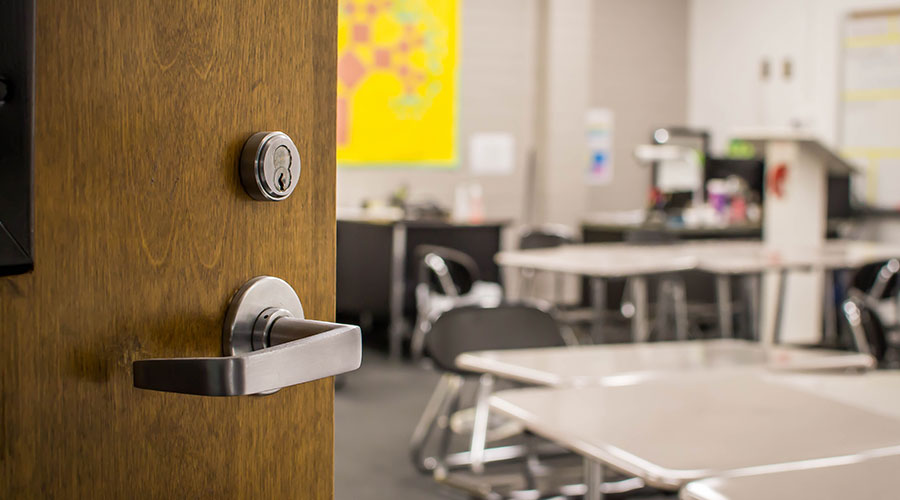Assessing Door and Door Hardware Costs
Doors and their associated hardware represent a small investment relative to the total cost of a facility, typically 1 to 3 percent of the overall facility construction cost. But doors and door hardware have an impact on the facility out of proportion to their cost. The appearance and function of the doors and hardware are scrutinized daily by building occupants and visitors. Every year, the list of regulations governing door installation and operation grows longer. Daily use and abuse take their toll, and when problems occur, facility managers are under pressure to rapidly respond.
In too many facilities, doors and hardware are maintenance headaches and represent significant maintenance expense for facility managers. One big problem is that those responsible for operating the facility generally lack input during the design and construction processes. More consideration typically is given to color selection than is given to doors and door hardware. As a result, most door decisions are made with little consideration beyond first costs and appearance.
Biggest Costs
Given that the typical door installation is expected to remain in service for 20 years or more, and that over this service life, the cost of maintaining the door and its hardware typically will exceed its first cost by a factor of 10, facility managers should look beyond first costs to life-cycle costs if they are to minimize operating costs.
Life-cycle cost analysis is a method for evaluating the total cost of ownership of a facility or component over the life of that item, including the initial cost of purchasing the item, its operating and maintenance costs over its service life, and the cost of disposing of the item at the end of its service life. By taking into consideration the total cost of ownership, life-cycle cost analysis allows facility managers to compare different options and select the one that minimizes total costs, not just first costs. When considering complex issues, such as building design alternatives, the analysis can be very detailed. For building doors and door hardware, the scope of a life-cycle cost analysis is rather straightforward.
Although life-cycle cost analysis has been applied to a wide range of building systems and components, it has not often been applied when considering door and door hardware options. What is more likely to happen is that designers will specify items they are familiar with and facility managers tend to stick with items that they already are using. Sticking with the tried-and-true may seem to make sense, but it does not guarantee that what is being installed is the most appropriate selection for that particular application.
Over the past 10 years, there's been an explosion of new door and door hardware products and systems. Facility managers today have almost unlimited options when it comes to selecting features. But so many options is a double-edged sword. It allows installations to be closely matched to the needs of the application, but it also makes it difficult to find the one that is best suited. That is where life-cycle cost analysis can help. By taking into consideration factors such as first costs, expected service life, maintenance costs, and inventory stocking requirements, life-cycle cost analysis can help facility managers determine what is best suited for a given application.
Developing a Plan
The key to using life-cycle costs successfully is careful planning. Before looking at the options available to them, facility managers should know the needs of the facility. How critical is security? What is the level of use, not only of the facility as a whole, but also for various areas within the facility? What level of abuse and vandalism are doors subjected to? The plan starts with identifying what the needs are both across the facility and within different areas of the facility.
Another key element of planning is standardization. Consider what happens when something goes wrong involving doors and their hardware. If security or access is affected, building occupants demand quick action. That means replacement parts must be on hand and maintenance personnel must already be trained in diagnosing and correcting problems. Without standardization, lots of different replacement parts must be stocked, parts that may never be required. Not only does standardization allow facility managers to reduce inventory requirements, it results in reduced training costs as maintenance personnel no longer have to be trained in every different type of system installed.
One critical element that is overlooked frequently is the expected service life for an area within the facility. In general, longer service life for doors and door hardware means higher first costs. Areas with projected long periods between renovations typically would benefit from the use of components with long service lives. But some areas and even some entire facilities have relatively short time spans between renovations and reconfigurations. In these applications, it would make more sense to select components with a shorter service life.
Related Topics:













